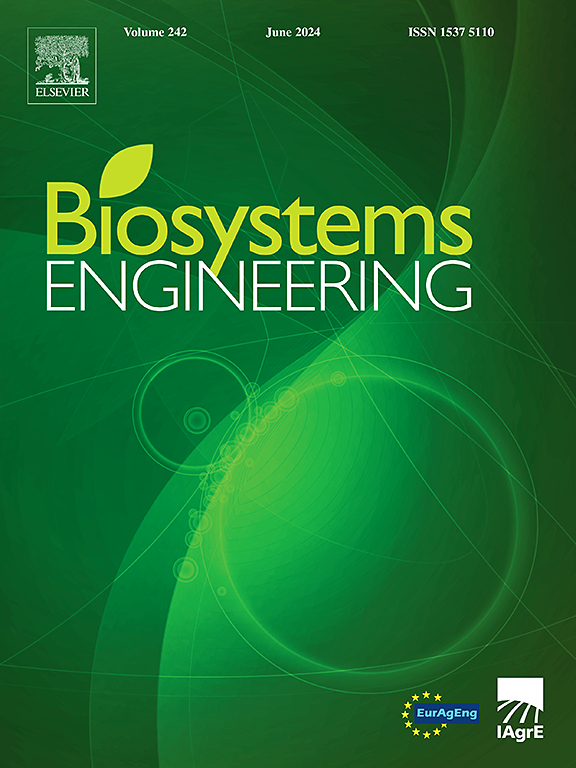DEM-DDM study on the humidification uniformity of brown rice in a pan coater
IF 5.3
1区 农林科学
Q1 AGRICULTURAL ENGINEERING
引用次数: 0
Abstract
In the milling process, proper humidification of brown rice can significantly improve milling performance. However, uneven humidification may lead to cracks in the rice, negatively affecting milling performance. In this paper, the DEM-DDM (discrete element-discrete droplet) simulation method is used to numerically simulate the humidification process of brown rice in a pan coater. The influence of coater rotational speed and inclination angle on humidification uniformity is studied. Through the analysis of the mixing behaviour and kinetic characteristics of brown rice particles within the pan coater, the causes of changes in uniformity are explained, and optimal parameters are proposed. The results show that the rotational speed of the coater mainly affects the radial mixing of particles, while the inclination angle primarily affects the axial mixing of particles. The optimum humidification parameters are the rotational speeds of 40 rpm and inclination angle of 80°. It has been found that the primary cause of uneven humidification of brown rice is the ineffective exchange of positions between the centre of the particle group and the spray zone. Compared to the inclination angle, rotational speed has a more significant effect on improving this phenomenon. This study is helpful to the digital design and optimisation of brown rice humidification process.

用DEM-DDM法研究糙米在蒸发器中的加湿均匀性
在碾磨过程中,适当加湿糙米可显著提高碾磨性能。然而,不均匀的加湿可能导致大米出现裂缝,对碾磨性能产生负面影响。本文采用DEM-DDM(离散元-离散液滴)模拟方法对糙米在镀锅机中的加湿过程进行了数值模拟。研究了涂布机转速和倾角对湿化均匀性的影响。通过对糙米颗粒在盘式涂布机内的混合行为和动力学特性的分析,解释了均匀性变化的原因,并提出了最佳参数。结果表明:涂层机转速主要影响颗粒的径向混合,倾角主要影响颗粒的轴向混合;最佳加湿参数为转速40转/分,倾角80°。研究发现,造成糙米湿化不均匀的主要原因是颗粒群中心与喷雾区之间的位置交换无效。与倾角相比,转速对改善这一现象的作用更为显著。该研究有助于糙米加湿工艺的数字化设计和优化。
本文章由计算机程序翻译,如有差异,请以英文原文为准。
求助全文
约1分钟内获得全文
求助全文
来源期刊

Biosystems Engineering
农林科学-农业工程
CiteScore
10.60
自引率
7.80%
发文量
239
审稿时长
53 days
期刊介绍:
Biosystems Engineering publishes research in engineering and the physical sciences that represent advances in understanding or modelling of the performance of biological systems for sustainable developments in land use and the environment, agriculture and amenity, bioproduction processes and the food chain. The subject matter of the journal reflects the wide range and interdisciplinary nature of research in engineering for biological systems.
 求助内容:
求助内容: 应助结果提醒方式:
应助结果提醒方式:


